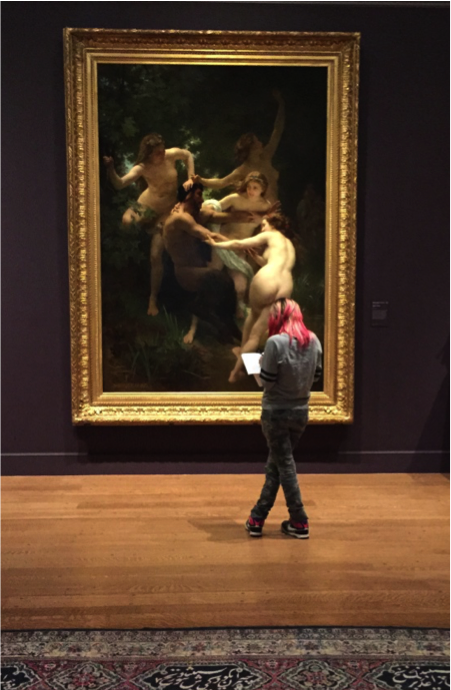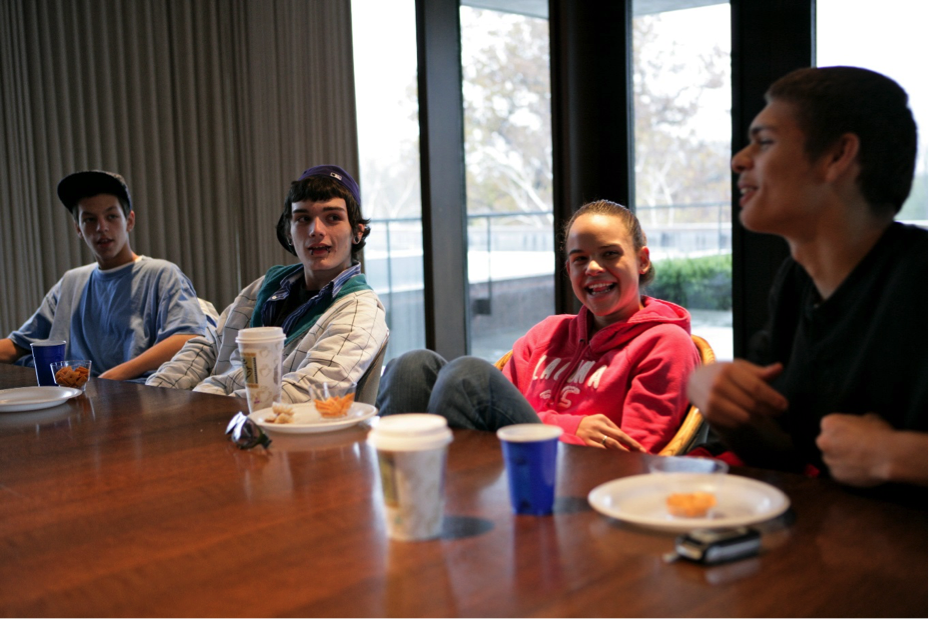
Back in August, I shared a blog post describing how the Eastern State Penitentiary is moving “beyond neutrality” to tackle the injustice of mass incarceration. The massive interest in that post (it is, to date, the most highly read post ever published on this blog) encouraged me to search for more examples of museums engaging with criminal justice. In today’s post Ronna Tulgan Ostheimer, director of Adult, School and Community Programs at the Clark Art Institute, tells us how her museum is playing an active role in social justice reform in the Northern Berkshire County.
The rationale underlying the RAISE (Responding to Art Involves Self Expression) program at the Clark Art Institute shares the optimistic assumption of the Center for the Future of Museums – that “museums can change the world”. Our ten-year experience with this alternative sentencing program for kids in trouble with the law proves the validity of this claim and offers a model of how an art museum can make a difference in the lives of people and communities.
RAISE participants are sentenced to our program by the juvenile court system, literally mandated to spend time at the Clark engaging with art. The five-week program is hosted twice a year, meeting once a week for two hours, and involves gallery experiences as well as group discussions and self-awareness exercises. We work with kids, ages 12 – 18, and each program serves 8 – 12 students. RAISE is based on the premise that if art is an expression of human experience and/or imagination then engaging with art offers an opportunity for contemplating the human condition, both our own and others, throughout time and place. The goal of the program is to help kids to develop a more accurate and constructive sense of self (and other) and how they fit into the larger world. RAISE gives kids a chance to get away from the buzz of their everyday lives and gives them a space to think about who they are and who they want to be.
The participants arrive the first week looking very uncomfortable. After quick introductions, we get right into the galleries and engage with the art. We set it up so the kids will experience the process as something they are good at, something that is interesting, and something that is fun. After the gallery talk, we go back to the boardroom and do a related activity designed to help the kids look at, think about and talk about their “crime” (the reason they were sentenced to the program) from multiple perspectives, as if it were a work of art. We shift the focus from shame to exploring the context and motivation for their behavior as a vehicle for greater self-understanding and ultimately greater self-control.
 |
|
|
The second and fourth weeks are devoted to learning the skills of visual analysis and interpretation. Students spend independent time in the galleries as well as participating in group processing activities. We talk seriously and intelligently, trusting and validating the participants’ perspectives. During the third week we focus on portraits, personal presentation and identity, and the idea that “what you see may or may not be what you get.” This session includes a self-portrait drawing lesson taught by a Williams College studio art professor. With her help, all of the kids draw a quality representation of themselves that they can be proud of. For many, this activity is also an introduction to drawing, a new competency; for some, a celebration of a skill that few knew about.
By the fifth week, the RAISE participants arrive with a very different posture than they held the first week and they can hardly be distinguished from our graduate students. We tend to run the program on Tuesdays and our Tuesday admissions desk volunteer has commented that she would never change her assigned day because it is so satisfying for her to witness the transformation during the five weeks of a RAISE program. At the final session, custodial adults and court and school personnel join the program and the participants act as their guides in the galleries, followed by a reception. At the reception, RAISE staff read letters they’ve written, sharing their observations about the strengths each participant has demonstrated throughout the program. This public celebration is the first time that the participants, their custodial adults and the court personnel have all been together since the time of sentencing. We’ve learned to have plenty of tissues available.
The program has been tremendously successful on many levels. In 2011, the Clark contracted with a Williams College psychology professor to conduct a three-year program evaluation. The study includes three methods of evaluation, a pre and post self-analysis measure, post program feedback from participants, custodial adults and court personnel, and an observer rating of participant behavior in the program. This research documented some of the program‘s benefits. As stated in the the executive summary:
“The subjective experiences of the student participants and their parents were overwhelmingly positive. The students’ own words suggest that they “got” the intended lessons about art and about themselves and their potential. The results from the more objective measures echoed these impressions. Specifically, students’ pre- and post-program self-reported ratings of their opinions about art and their opinions about themselves showed statistically significant increases. The increases were particularly strong for their opinions about art; for many, this was their first exposure to art. Outside observers’ ratings of the students’ behavior during the classes (engagement, participation, socially appropriate behavior, connecting with the art, etc.) also showed large and statistically significant increases from the first to the last session. Individual graphs for each student of changes in these ratings over the five sessions revealed considerable variability among students, and unique profiles for each of the four cohorts. In all, the findings suggest that the RAISE program is working to accomplish its stated goals.”
Although the courts do not keep records of the recidivism rates for kids who have participated in RAISE, Berkshire County Juvenile Court personnel have lauded the program as “…one of the most effective and uplifting programs offered through the Berkshire County Juvenile Probation Department” and “a revelation of emotion, a moment of discovery that is as rewarding as anything I have experienced in my personal or professional life.”
RAISE has also had a positive impact on the Clark as an institution. The program has expanded our profile within the community by serving new audiences in ways we had never before imagined. Many museums in the USA and other countries have learned about the RAISE program at the Clark and are considering or have developed programs of their own for kids involved with the legal system. We are happy to share our experience with others and have developed a curriculum guide that we are glad to share as well. The RAISE program model has helped us realize new ways to make the museum relevant in our community. Although we will always teach about our collections and exhibitions, RAISE has helped us to think in new ways about how we can meet community needs by teaching with our collection to provide relevant and maybe even transformational education programs.
If you would like to learn more about RAISE, and request a copy of the curriculum guide the Clark Art Institute has so generously offered to share, contact Ronna Tulgan Ostheimer RTULGAN (at) clarkart.edu.
.
|
SaveSaveSaveSave









